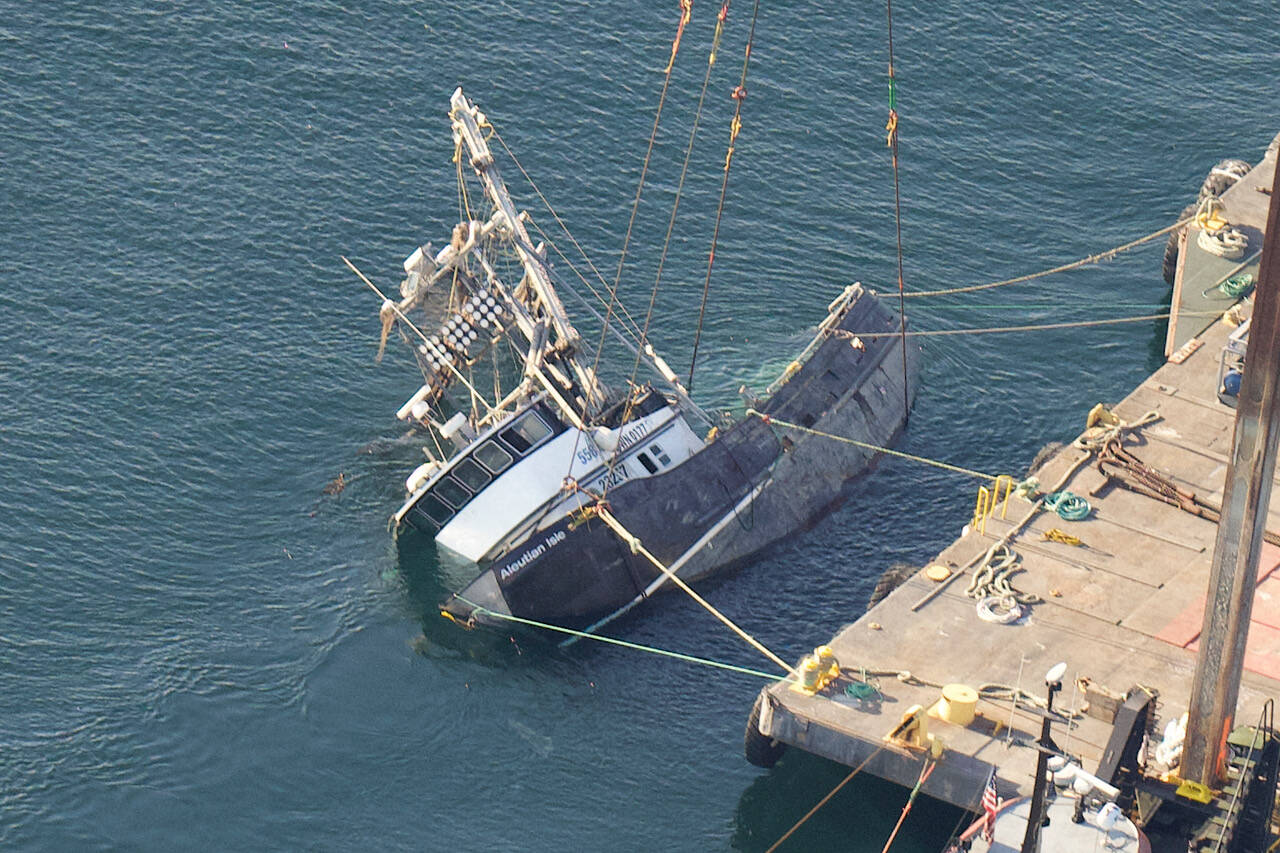Submitted by the U.S. Coast Guard.
The fishing vessel Aleutian Isle was successfully lifted to the surface on Sept. 17 with operations ending later that night.
After surfacing, crews began the complicated task of dewatering and removing fuel. Crews partially dewatered the vessel and removed approximately 775 gallons of oily-water mixture where it currently rests floating with assistance from the barge DB-24.
Crews were unable to safely access all spaces and completely dewater the vessel. Consequently, the vessel’s weight exceeded the safe workload for the existing recovery plan. The unified command is reevaluating the best path forward.
“Raising the vessel to the surface is certainly a success, but the complexity of this operation continues to challenge our team,” said U.S. Coast Guard Cmdr. Kira Moody, incident command. “Lifting the boat was a critical first step to minimize the ongoing pollution risk. The next step will likely involve relocating the crane barge to a more sheltered location where we can fully secure the boat with far less risk to our divers and crew and better protect the environment from any lingering pollution risk.
Continuing to lift the vessel in its current position would jeopardize the safety of crews who need access to the starboard side fuel tanks and internal spaces to continue dewatering and remove fuel to lessen the vessel’s weight.
The onsite crane can lift the current weight of the boat, but the existing configuration of the rigging places too much stress on the vessel’s structure, which could cause it to break and likely release remaining fuel onboard.
Although the lifting operation is postponed, pollution mitigation strategies have been effective. As expected, sheening was visible while the vessel was lifted to the surface, and responders were able to boom sheening that was containable. Estimates to determine the amount of fuel released are still in-progress, but overflight observations keep it within expected amounts.
Wildlife and pollution mitigation teams were mobilized and successfully deterred birds from sheening during lift operations. Teams continue to actively monitor sheening, location of marine mammals, birds and impacts to shorelines.
Recovery operations are estimated to resume in the next day or two. The unified command is reassessing the developing situation and re-evaluating the best options moving forward.
Air quality monitoring and protective booming will remain in place until recovery operations conclude. Over the course of the response, there have been no levels of concern despite the smell of fuel in some locations.
If the public sees uncontained sheening, please call the National Response Center at: 800-424-8802. If you encounter oiled wildlife, please contact 800-22-BIRDS.
A safety zone of 1,000 yards remains in place around the operations.



